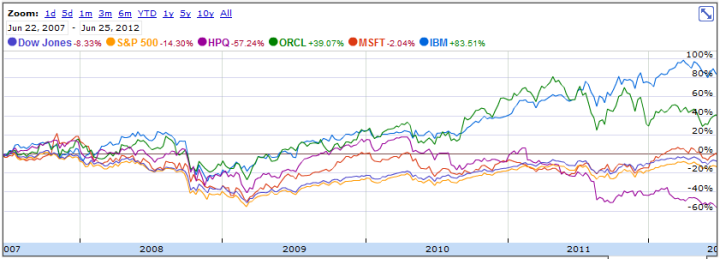When I was a kid my mom taught me how to solve puzzles. She said to find the corners first, then the edge pieces, then assemble the frame, then sort the pieces by color... It was a sound process and surely was easier than randomly picking one of the 500 pieces out of the box and trying to figure out where it went. From that experience I learned that solving the puzzle depended heavily on the sequence.
It is interesting to see how the four big players in tablets computers: Apple, Amazon, Google, and Microsoft are each approaching their complex puzzles. Just like doing puzzles with my mom, the sequence is everything.
The first entrant into the market was Microsoft - over a decade ago. Bill Gates was correct that tablets were going to be big. We now know that his vision was extraordinary. Unfortunately, he was pulling one piece out of the box and there was really no hope of fitting it in with the other pieces.
Meanwhile, Steve Jobs was laying down the corners and the frame of his puzzle with the iPod. It was a simple but amazing device that enabled users to do one thing: carry 1,000 songs in their pocket. At the time the next best solution held only 10 songs. Then the iPod lead to the iPhone, the iPod Touch, all those apps and app developers, and finally the iPad. That final puzzle piece was easy to place in the picture because so many other pieces were in place already.
At the same time, Amazon was creating an amazing shopping experience for books and everything else in the universe on its web site. By the time it introduced the Kindle (same time as the iPhone in 2007) its puzzle was pretty well formed too. The Kindle put hundreds of books in your pocket and there really was not another alternative.
Just after that, in 2008, Google introduced its Android Operating System and the Chrome Browser. This story is a bit more complicated because Android was started outside of Google in 2003 and acquired by Google in 2005. Either way, the Google puzzle was being assembled well before the Samsung Galaxy Tab was introduced in late 2010. Add the proliferation of Android devices, 400,000 apps, and by the time we arrive at yesterday's announcement of the Nexus 7 a great deal of the Google tablet puzzle had been filled in.
It is true that there were a billion personal computers already running Microsoft operating systems when Bill Gates introduced his tablet in 2002. Surely that would form up the Microsoft puzzle. Right? So why does it seem like Microsoft is just now pulling out the first puzzle piece with the Surface and holding it over a blank table? Because Microsoft is trying to start a whole new consumer puzzle -- and all of its existing puzzle pieces make up an enterprise picture. Yes we use the Windows OS at home -- but it has not created any more of an ecosystem than Phoenix BIOS -- which we all run at home too.
It is going to be tough for Microsoft to complete its consumer tablet puzzle. The Surface may end up being a great device, it may get a great response from Microsoft's enterprise customers. But it is going to be hard to put the pieces together for consumers.
